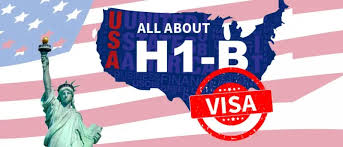Immigration Law at Philippines
Here’s an up-to-date, structured overview of immigration law in the Philippines, covering visitor entry, work permits, long-stay options like the digital nomad visa, and pathways to permanent residency and citizenship:
1. Entry & Visitor Visa Policy
Visa-Free Entry: Citizens of many countries—including most of Europe, the Americas, parts of Asia—can enter visa-free for up to 90 days for tourism or business purposes.
Conditional Entry for Select Countries: Chinese, Indian, and Macau nationals may enjoy visa-free entry up to 180 days if they hold a valid visa or residence permit from the U.S., Canada, the U.K., the Schengen Area, or Australia.
Alternatives: Others must apply for visas through Philippine consulates—tourist or business visas typically allow up to 183 days total, with multiple entry options.
Transit & Special Permits: For short stays related to study or special purposes, Special Study Permits and others are issued by the Bureau of Immigration.
2. Work Visas & Employment Authorization
Primary Work Visa (9(g)): Requires sponsorship by a Philippine employer, an Alien Employment Permit (AEP) from DOLE, and proof via job contract and qualifications.
Short-Term Options:
Special Work Permit (SWP): For brief assignments up to 6 months—no DOLE endorsement required.
Provisional Work Permit (PWP): Used while awaiting issuance of a 9(g) visa.
Procedural Changes (Effective June 2025): Employers no longer need to post job ads online (like PhilJobNet or PESO), but are still required to post in newspapers. Processing for AEPs now takes up to 15 business days.
Requirements & Oversight: Applicants must undergo health checks or criminal background checks depending on the visa category. Employer must demonstrate financial capability, legitimacy, and job necessity.
Digital Nomads: Starting June 2025, the Philippines will offer a Digital Nomad Visa (DNV) valid for 1 year, renewable once, allowing foreigners to legally live and work remotely for companies outside the Philippines—no local employment allowed. Conditions include proof of sufficient foreign income (estimated at ~$24,000/year), clean criminal record, health insurance, and reciprocity in visa arrangements.
3. Retirement, Special Residence, and Investor Visas
Special Resident Retiree’s Visa (SRRV): Available to individuals aged 35+ (with a pension) or 50+ (without). Requires deposit in a Philippine bank ($10,000–$50,000 depending on option), granting indefinite residency and additional benefits like multiple-entry status and duty-free import of household goods.
Spouse (13(a)) Visa: Granted permanent residency to foreign spouses of Filipino citizens, with evidence of stable income and genuine marriage.
Investor Visa SIRV: Requires a $75,000 deposit in a Philippine business or approved investment.
Other Special Permits: The BI issues special permits for study, provisional work, and other purposes as needed.
4. Permanent Residency & Citizenship Pathways
Natural-Born Citizenship: Conferred on anyone born to at least one Filipino parent or found as an abandoned child within the country.
Naturalization:
Standard Path: Requires 10 years of residency, economic stability, good character, language proficiency, and oath of allegiance.
Reduced to 5 years: If married to a Filipino, employed by the government, recognized scientist, or significant contributor to the state.
Administrative Route: Available under RA 9139 for those born in the Philippines, demonstrating integration and good character—no courtroom process required.
Legislative Route: Citizenship conferred by Congress for individuals of exceptional merit.
Dual Citizenship: Permitted—Filipino citizens may retain or reacquire nationality if previously lost.
5. Migration Protections & Oversight
Anti-Trafficking Act (RA 9208, 2003): Protects victims of trafficking by offering temporary residency, exemption from deportation, and access to legal, medical, and psychological services. NGOs power many support operations.
Regulatory Authority: The Bureau of Immigration (BI)—under the Department of Justice—manages all immigration functions including visa issuance, status changes, forensic checks, deportations, and immigration detention.
Summary Table
| Category | Highlights |
|---|---|
| Visitor Entry | Many visa-free; others need envoy approval or e-visa |
| Work Authorization | Includes 9(g), SWP, PWP; new AEP rules from June 2025 reduce complexity |
| Digital Nomads | New DNV launching mid-2025 (1 + 1 year), remote work only, income proof required |
| Long-Stay Options | SRRV for retirees; spousal & investor visas available |
| Citizenship | Natural-born, judicial/administrative, legislative routes; dual allowed |
| Victim Protections | Anti-trafficking law grants temporary residency and support |
| Enforcement | Bureau of Immigration oversees all enforcement, processing, and detention |
Final Thoughts
The Philippines offers a diverse immigration landscape—from short-term tourism and work visas to attractive retirement, digital nomad, and investment options. While pathways to permanent residency and citizenship exist, they require clear eligibility. The newly introduced Digital Nomad Visa represents a forward-looking option for remote professionals. Meanwhile, protective laws like RA 9208 ensure humanitarian consideration for trafficking victims.
Would you like help preparing documentation for the DNV, comparing SRRV options, navigating a work permit (9(g)), or exploring citizenship eligibility?





0 comments